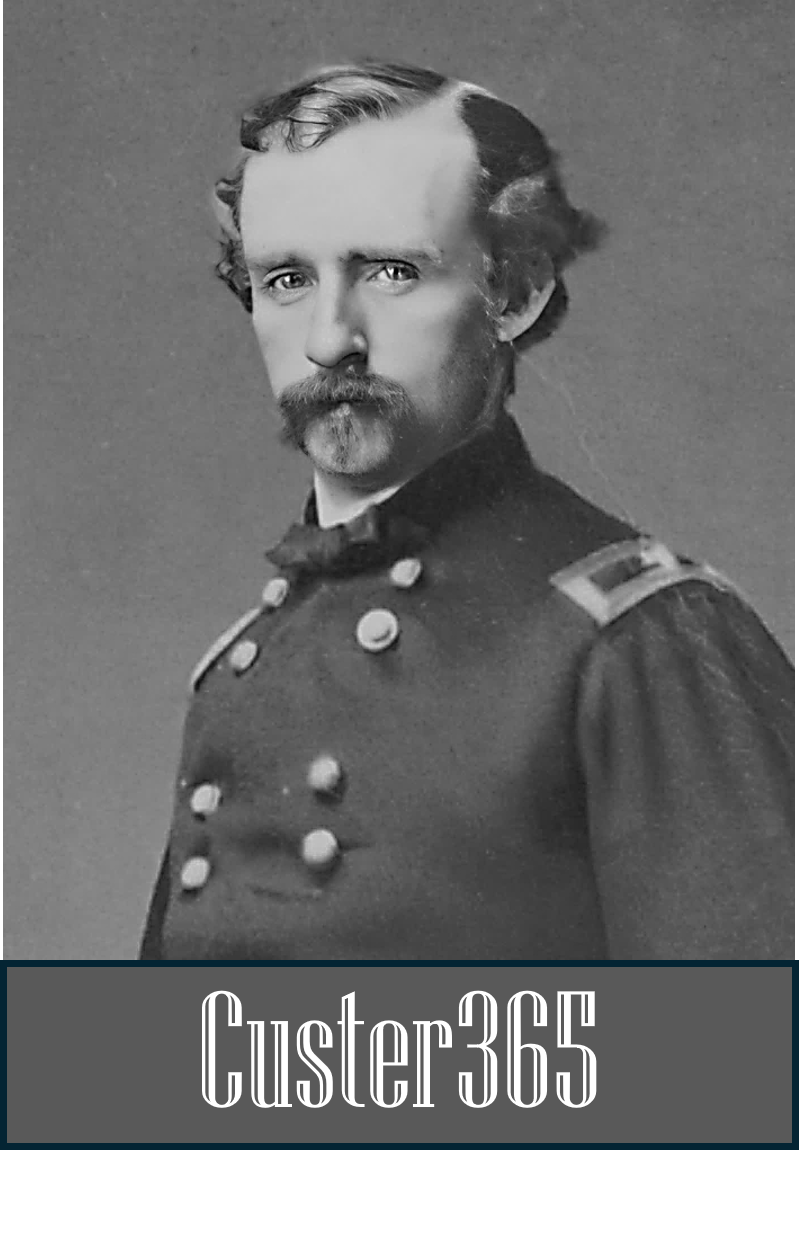JULY 8: Onward to the Black Hills
On this date in 1874, Custer’s expedition into Dakota’s Black Hills is led by Lakota scout Goose to Hiddenwood Creek and a like-named cliff near present-day Hettinger, N.D. Today, the body of water is known as Flat Creek, one of the main tributaries of the Grand River in North Dakota.
Custer’s 1874 Black Hills Expedition stops at Hiddenwood Creek on July 8, 1874. (Credit: National Archives)
A historical marker for Custer’s stop near Hiddenwood Cliff is located in Hettinger on U.S. 12, 0.5 miles north of 40th Avenue SE. There’s also a historical marker about 12 miles to the east designating the site of “The Last Great Buffalo Hunts.”
July 8 marked day 7 of the expedition, which set out from Fort Abraham Lincoln, approximately 135 miles to the northeast, near present-day Bismarck, ND. Custer led 10 companies of the 7th Cavalry, which included 2,000 men, 1,000 cavalry horses, 900 mules, 300 beef cattle, and 150 wagons. His orders were to explore the Black Hills territory, which was supposed to be “off limits” to whites per the 1868 Laramie Treaty, and locate a potential site for a fort on the western side. Unofficially, the expedition was expected to confirm or deny the presence of gold in the Black Hills, which was then part of the Great Sioux Reservation.
A reporter accompanying the expedition described the evening spent at Hiddenwood thusly:
“We have suffered and panted through a march of twenty miles to enjoy this balmy evening and beautiful spot – the most beautiful in varied scenery of any we have yet seen. This place, the only timber in a radius of thirty miles, is called Pahachechacha, or Hidden Wood, by the Indians because the hills so cluster around it that the trees cannot be seen two miles away – one of the few shady oases in this desert of prairie land, and very grateful after a week’s marching. For a background sunset as gorgeously beautiful as any that ever glowed and a high, jagged bluff covered with clusters of trees, with a clear stream of water running at its base. In the foreground a smooth grassy plain covered with tents, hooded wagons and grazing horses, a band in the center playing familiar airs, and an atmosphere cool, fresh and bracing, and you have a picture of our camp to-night.”
Around July 16-17, the Expedition crossed into Montana Territory, then Wyoming Territory, as they continued to head south toward the Black Hills.


